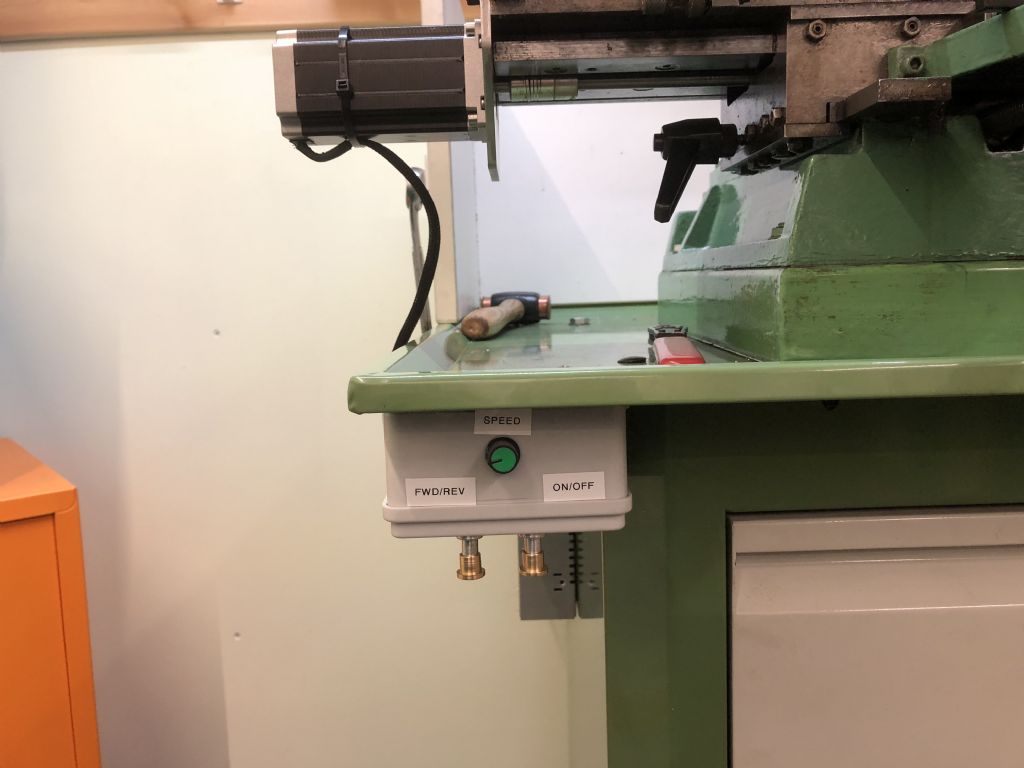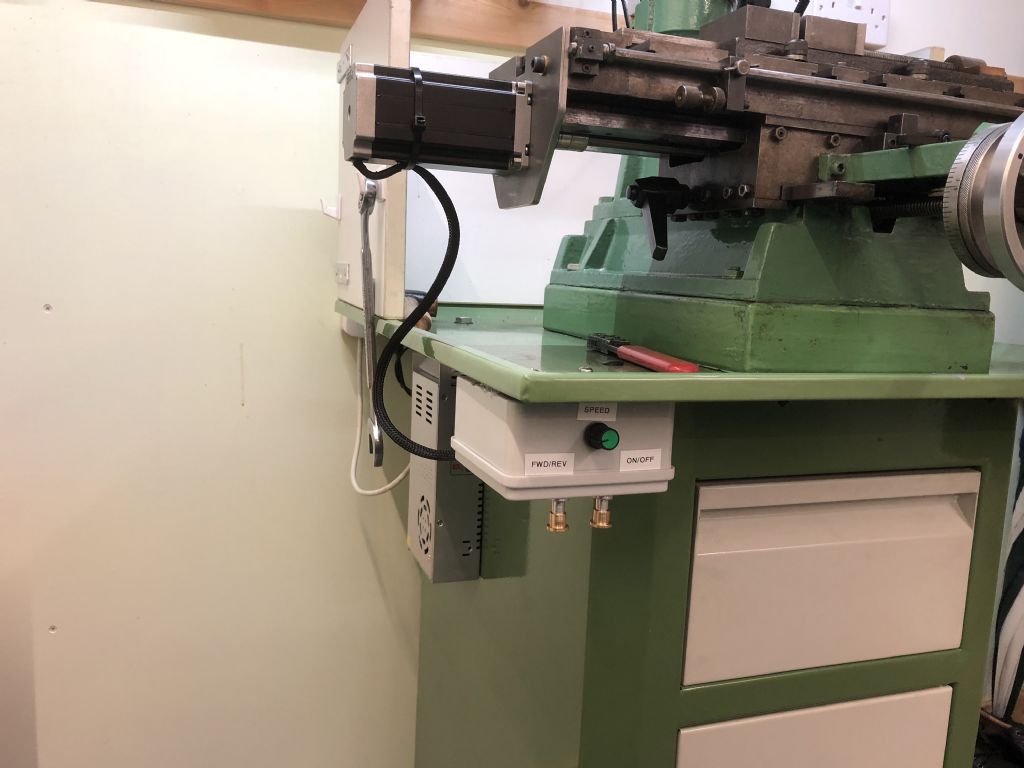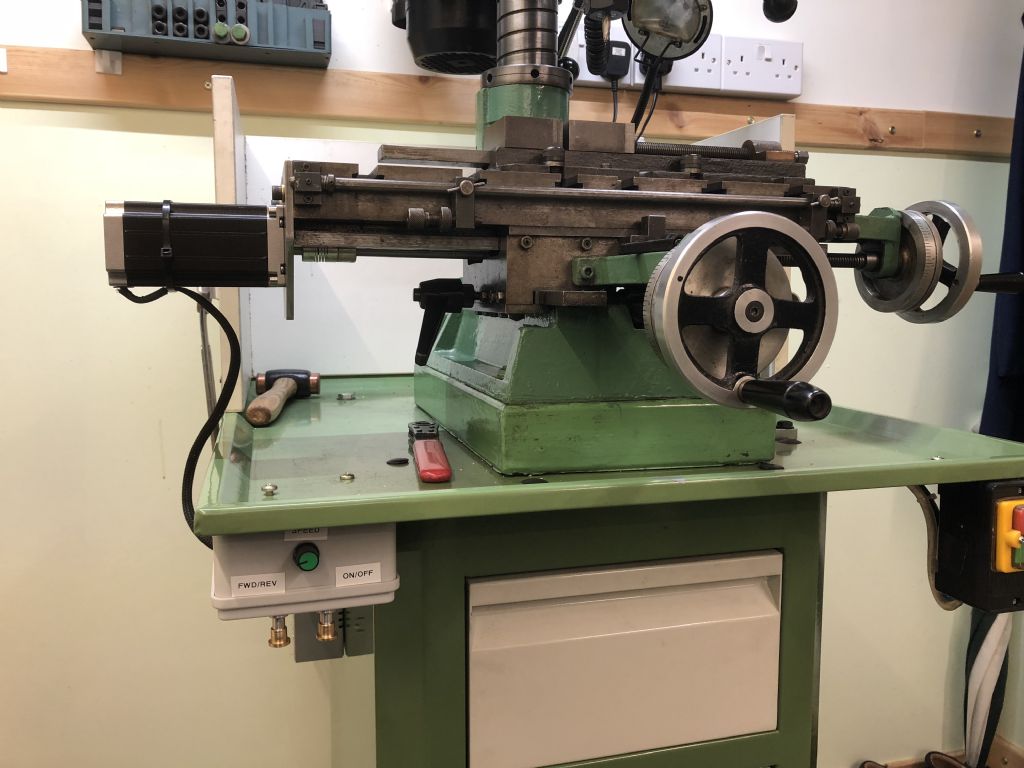Ian,
The second video MichaelG indicated should get you on track very quickly.
Some sums for feed rates and stepper sizing..
A NEMA23 directly coupled might be a little small for your application – I am not sure of the friction/stiction of the slide on the Wesbury.
A stepper tends to lose torque when half-steps or micro-stepping is applied, and also loses torque rapidly as RPM increases, so you have some conflicting requirements between smooth feed, stepper RPM, and small enough feed steps.
Assume the leadscrew pitch is say 0.1inch – then if the stepper runs in full step mode,ie 200 steps/rev, each step is approx 5 thou (0.0005inch), which is fine. Now to feed at say 20thou per second, that is 4 steps/second. At such a low step rate the motor growls and the feed is not so smooth – you will feel the mill table vibration. That may make the finish a little less than great..
At 0.1inch per second feed the stepper runs at 20 steps/second – it is happier there, but still a very low step rate, and still vibrates – 20Hz is still a low frequncy and vibration will still be evident. Remember, the stepper in effect , stops 'dead' after each step – there is mechanical inertia that helps it not stop quite dead, but it vibrates. Also, 0.1inch per sec feed is rather fast for anything other than plastic and maybe light aluminium cuts on the Westbury?
Basically, the stepper is working uncomfortably at its bottom end. The vibration can be smoothed out almost completely by increasing the number of electronic steps per motor full step, ie, half, 1/4,1/8 stepping, etc. The motor will be much smoother and vibration less or none. However, the motor loses torque considerably, and may miss-step or stall. 1/2 step still has good usable torque so may work better.
A better way is to gear the motor to leadscrew drive – say 4:1. The motor then does 4 turns for one leadscrew turn, giving 16 steps/sec for a 5thou/sec feedrate, and halfstep increases that to 32steps/sec, much better. The torque is also increased by the gearing, so a Nema23 will do the job.
At 0.1inch/sec feed rate, the stepper spins at 4RPS = 460RPM which is comfortable.
Sorry for the long speech…
Joe
edit – just to add – alignment is always an issue when trying to direct direct couple the motor shaft to leadscrew – either use a flexi-coupling, or a toothed belt and pulley arrangement, through which the gear ratio can easily be applied.
2nd edit: Or use a NEMA34 motor,direct couple, and run in 1/4 or 1/8 step mode. Also try to use as high a supply voltage as the stepper driver will allow – the voltage is what overcomes the motor back-emf and helps prevent stalling
3rd Edit!!! – In the Myfordboy video below, it appears a NEMA34 motor is used- BUT, it is a double stack motoriie, twice the length of a base motor, so does provide more torque as well.
Edited By Joseph Noci 1 on 04/09/2018 09:05:42
Edited By Joseph Noci 1 on 04/09/2018 09:08:46
Edited By Joseph Noci 1 on 04/09/2018 09:12:40
 Ian Hewson.
Ian Hewson.






